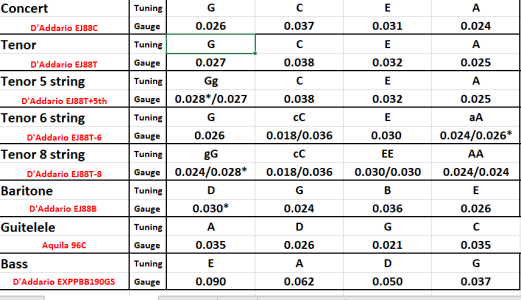Part 1:...I haven't bought sets of strings for years. Instead I buy single strings based on my research and my taste in tone and preferred tension. Perhaps very few have any interest in this level of research. But I would love to compare notes with others who have not settled for buying prepackaged string sets.
I do buy sets that have mostly what I am seeking but always exchange 1, 2, or even 3 strings in a set to get my preferred "taste in tone and preferred tension." I would add to that, string-to-volume balance (getting rid of "howlers" or dull notes) is essential. I've likely spent several hundred on sets and singles due to my obsession. Once I get it right though, I play that instrument much more freely.
Each ukulele is unique, and strings that I find work on a specific scale do not always work on another uke with the same scale. Body resonances and such are not predictable but must be accommodated. If I can't get it strung to my liking, the instrument goes away.
Last edited:



